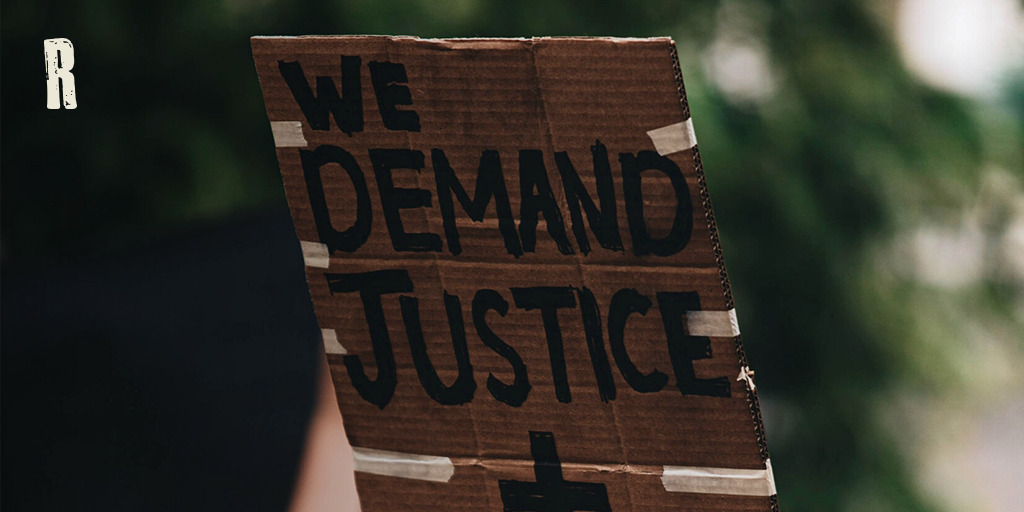Everything you didn’t know about lethal injections: they’re cruel, unusual and racist.
America’s capital punishment system is broken. Lethal injection, the most popular execution method in the US, was touted as a more humane than previous methods.
This couldn’t be further from the truth.
Lethal injection executions go wrong more often than any other execution method. They often result in prolonged and painful deaths, commonly known as “botched” executions.
And now, our new groundbreaking investigation ‘Lethal Injections in the Modern Era: Cruel, Unusual and Racist’, reveals data showing that lethal injections aren’t just cruel, they’re racist.
Read on to find out everything you didn’t know about lethal injections and to find out more about our report.
Capital punishment is racist at every level. End this now.
Racism does not just exist in the US’s police stations and courts. It extends to the execution chamber too. End this now.
End this now.How do lethal injections work?
States use a variety of drugs and drug combinations to carry out lethal injection executions. Most states either use three drugs or one drug.
This is how the three-drug protocol works: first, an anaesthetic is used to make the person unconscious. Second comes a drug that paralyses them in order to conceal evidence of pain and third, a drug stops their heart. This method is designed to conceal evidence of brutality when in reality, it’s just as cruel and torturous as any other execution method.
Lethal injection has no basis in medicine: it was invented in 1977 by a legislator and local coroner. The latter famously regretted inventing the method, calling botched executions “unconscionable.”
It was claimed that lethal injections would take around five minutes, with people painlessly falling asleep and dying less than two minutes after the final injection. Instead, botched executions are often lengthy and painful. More than a quarter lasted over an hour. The longest lethal injection, in 2022, took over three hours.
Lethal injections go wrong more often than any other method. They borrow the trappings of a medical procedure, but this is just a façade.

Do lethal injections hurt?
Lethal injection can cause prolonged pain and extremely painful deaths – this is often obscured by elements of the process itself: for example, the second drug (a paralytic agent), the tight straps preventing a prisoner from moving, the white sheet hiding the body from view, or a curtain being drawn between witnesses and the execution chamber.
Medical experts have found that lethal injection can cause pulmonary edema – “the feeling of choking, drowning in [one’s] own fluids, suffocating, being buried alive, and [a] burning sensation” while being “unable to speak or scream.”
A federal judge in Ohio compared lethal injection executions to “waterboarding.” Supreme Court Justice Sonia Sotomayor has called this method “the chemical equivalent of being burned at the stake.”
What is a botched lethal injection execution?
A botched execution is an execution gone wrong, often resulting in prolonged pain.
Our new report, ‘Lethal Injection in the Modern Era: Cruel, Unusual and Racist’ analysed lethal injections over the last five decades. We found that Black people had 220% higher odds of suffering a botched lethal injection execution than white people in the modern era of the death penalty.
It also finds that botched lethal injection executions occurred regardless of the drugs used, and irrespective of whether a one-drug or a three-drug protocol was used.
Beyond the significant racial disparities identified by the research, our new report also found that botched executions typically lasted an extremely long time: over a quarter (19) of botched lethal injection executions lasted over one hour, with over one-third (26) lasting more than 45 minutes. The longest lethal injection execution in 2022 took over 3 hours.
Can lethal injections fail?
Yes – lethal injections can fail.
Lethal injections are more likely to go wrong than any other execution method. And when an execution is ‘botched’ it results in tortuous pain. Judges have compared it to “waterboarding” and being “burned at the stake”.
In the modern era of executions, there have even been six lethal injection executions that have had to be abandoned because the process did not work, and these individuals survived the process. Their names are Romell Broom, Alva Campbell, Doyle Hamm, Alan Miller, Kenneth Smith and Thomas Creech. There was one additional individual – Clayton Lockett – whose execution was halted due to complications, but he died after 45 minutes in the execution chamber due to a massive heart attack.
There are several reasons why lethal injections can go wrong.
Lethal injection executions are frequently administered by prison officials with no medical training. The drugs are often sourced from illicit suppliers or illegally diverted from their designed and approved purpose. And lethal injection is entirely experimental, employing drugs in untested combinations and quantities.

What lethal injection cocktail is used for the death penalty?
Most drugs used to kill people by lethal injection are life-saving drugs that are intended to improve lives, not end them. All approved manufacturers of these drugs oppose the misuse of their medicines in executions.
The sedatives and barbiturates that are often used in executions are needed by hospitals across the US and many are in dangerously short supply.
Has anyone ever survived a lethal injection execution?
To date, six people have survived lethal injections, one as recently as February 2024.
Three of these executions took place in the state of Alabama.
One of them was Kenneth Smith. Kenneth Smith survived a traumatic hours-long lethal injection attempt in November 2022. After the failed attempt, he was simply returned to his cell on death row.
On 26th January 2024, Kenneth Smith was executed by the state of Alabama using nitrogen gas. Like lethal injection, the new method of nitrogen hypoxia has been dressed up as being more humane on without any evidence or testing. And like lethal injection executions, it proved to be anything but humane.
Reprieve’s new study into the lethal injection:
Reprieve’s new report, ‘Lethal Injection in the Modern Era: Cruel, Usual and Racist’ explores the trends and contributing factors that lead to an execution being botched.
Our findings show without doubt that this method is inhumane, and that Black people are suffering these torturous executions at a higher rate than while people.
The report is named: ‘Lethal Injection in the Modern Era: Cruel, Unusual and Racist’.
What’s race got to do with the lethal injection?
For decades, studies have documented that the death penalty discriminates against Black people, who face disproportionate rates of capital charging, death sentencing, execution, and exclusion from capital juries. But now, researchers at Reprieve uncover that racial disparities extend into the execution chamber too.
One of the most significant findings to emerge from our analysis is that black people had a 220% higher chance of suffering a botched execution than white people in the modern era of the death penalty in America. It also found that:
– In the state of Arkansas, 75% of botched lethal injection executions were of Black people, despite executions of Black people accounting for just 33% of all executions.
– In the state of Georgia, 86% of botched lethal injection executions were of Black people, despite executions of Black people accounting for just 30% of all executions.
– In the state of Oklahoma, 83% of botched lethal injection executions were of Black people, despite executions of Black people accounting for just 30% of all executions.
Secrecy and haste were found to be factors contributing to increased rates of botched and prolonged executions.
State secrecy and botched executions
Our new report also reveals regular state cover ups of issues that occur in executions. States have often reported executions going smoothly, when witness testimony clearly proves they did not.
This includes state cover ups about how they got the drugs, and secretly trialling new methods of executions and covering it up when executions go wrong. All to maintain the myth that lethal injections are humane.
Worse yet, executing states have passed secrecy laws prohibiting access to information on the drugs used. This includes critical information on the source and quality of the drugs.
This is worrying when the illicit and worrying procurement of restricted and unapproved drugs can contribute to lengthy and painful botched executions.
Our new research uncovers the explicit link between the two.
You can read the report in full here.
